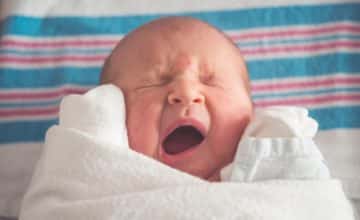Understand the core components of early brain development and access downloadable resources to further your understanding about supporting critical periods in brain development.
How can we maximize brain development during the first three years?
Positive early relationships are essential in helping connect those billions of neurons. Optimal child development, including during the perinatal period, is based on feeling safe, secure and loved.
Sensitive and responsive adult-child relationships provide a social-emotional environment that helps shape a child’s sense of identity, confidence, and well-being, which in turn shapes their capacity for learning and growth in every aspect. From the very beginning, the conversations (whether verbal or not) and interactions that you have with children help shape their future as a communicator and member of a community. Sensitive, observant adults can be valuable “thinking partners” to children as they explore, investigate, create, experiment, and build theories of how things and their world work.
What are the “critical periods” in brain development?
Growth in brain volume takes place in the early years of life:
- At 3 months—Brain is more than half of the adult brain volume
- At 1 year old—Brain is about 2 lbs. (.9 kg), nearly ⅔ its adult size
- At 6 years—Brain is almost 3 lbs. (1.4 kg), 95% of its adult size
Size is just one way that a human brain grows. It also grows in connectivity. It is the connectivity, or communication between the brain cells, that allows children to use their brains to their full capacity. Nerve cells, or neurons, play an important role in connecting our bodies and brain together and to the world around us. Our brains have the greatest plasticity at the beginning of life and it decreases as we age. This also means that the child’s environment in the first years of life has a very significant impact on how the brain develops and functions.
Scientists have identified that some areas of development have windows of time that close more quickly, often called critical periods in brain development, while others stay open longer, often called sensitive periods.
Critical periods in brain development have more distinct windows of time when they start and stop. After the time period ends, the window of opportunity for the skill to develop closes. Sensitive periods begin and end more gradually and represent the optimal time for maximum change, although change can occur after the sensitive period ends—it just requires more effort.
Sensitive periods are the time in development when a brain region is most open to learning or refining a particular skill or brain function. Many new connections between neurons are formed during sensitive periods, and unneeded ones are eliminated—a process called pruning.
Pruning allows brain circuits to run more efficiently. Early experiences affect the nature and quality of the brain’s developing architecture by determining which circuits are retained and which are pruned through lack of use. In this way, each child’s brain becomes better tuned to meet the challenges of their particular environment. Overproduction of synapses peaks in early childhood between 5 and 6 years old. Excess synapses are removed by pruning, which peaks in adolescence and continues into adulthood.
Baby Brain Development by Month: What to Expect
Understanding baby brain development by month can help caregivers provide appropriate support. For instance:
- By 6 months, infants typically begin to recognize familiar faces and sounds, indicating progress in memory and recognition skills.
- By 12 months, many babies start to say simple words and follow basic instructions, reflecting advancements in language comprehension and expression.
- By 24 months, toddlers begin forming two-word sentences and engaging in more complex problem-solving.
Recognizing and Encouraging Cognitive Milestones
By recognizing and supporting cognitive development milestones and understanding the stages of early brain development, caregivers can play a pivotal role in fostering their child’s growth. Early childhood experiences shape brain architecture, emphasizing the importance of responsive caregiving and a supportive environment.
Providing the right stimulation at the right time can have a lasting impact on a child’s learning and well-being, helping them build the necessary skills for a bright future.




